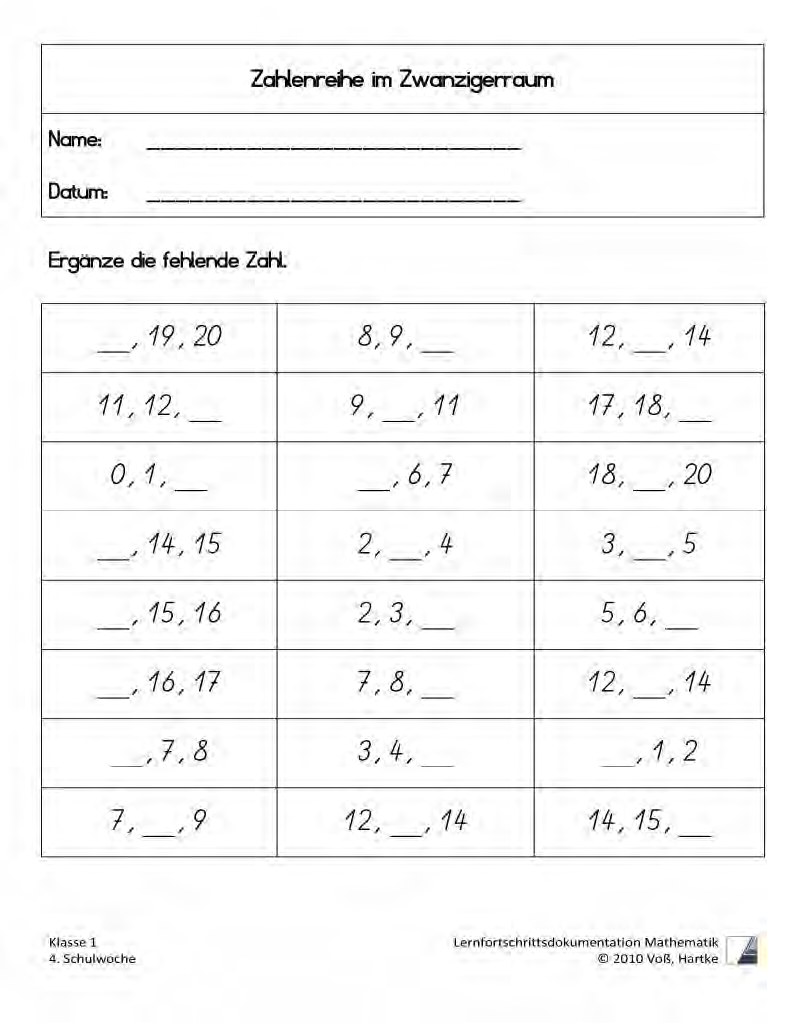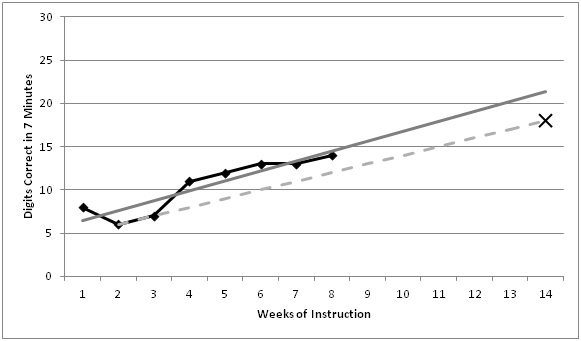CBM - What does it mean?
CBM (curriculum-based measurements) make a curriculum-customized diagnostic procedure of school children’s learning progress possible. They are conducted several times during the school year so that the progress of each child is reflected by the points achieved in parallel tests. In this context, a parallel test consists of different exercises than the previous ones although they are within the same level of difficulty. Thus, the more a student can improve his or her learning progress, the more points he or she will achieve in the test. By collecting multiple comparative values it is possible to assess and interpret the results of each test. Plain knowledge, however, is not the only tested factor in the measurements. Further skills are examined which are considered to be representative for a broader competence spectrum. In fact, results of one-minute reading tests correlate highly with results of more extensive reading tests.
The measurements are conducted in different frequencies following the rules:
• The lower the learning output of a student, the less time should pass until the next test (once a week maximum).
• The higher the learning output of a student, the more time is given until the next test (once a month minimum).
CBM are short tests similar to daily exercises. The systematic repetition of the tests can illustrate the progress of specific competences in different learning areas (such as mathematics). Within a given timeframe of usually just a few minutes the children have to try to solve as many exercises as possible.
→Here you can find an overview of CBM designed by the University of Rostock.
You can also have a look at an example exercise sheet for math classes in the picture below. There, students have to fill in as many missing numbers as possible within one minute. The subsequent parallel test would contain different numerical sequences or alternatively the same ones but in a different order.
CBM - What is the purpose?
The purpose of CBM is:
- to document the learning progress of each school child.
By repeating the measurements on a regular basis it is possible to observe an occurring increase or stagnation of the learning progress, so that teachers are able to react adequately within a short time.
- to identify students who need additional support because of their learning and development difficulties.
CBM help to detect current learning gaps so that insufficient competences can be amplified with the help of specific interventions.
- to increase the effectivity of lessons and educational interventions.
The test results provide feedback about the efectivness of current lesson. If students don’t respond to current interventions, it indicates that other supporting measures should be implemented in order to achieve the required learning goals.
- to provide feedback to teachers, students and their parents.
- The Teacher
- assesses the learning progress within a class by observing and comparing.
- is able to draw conclusions about the effectivity of his or her lessons.
- is able to evaluate each student’s performance in a more comprehensive way.
- receives data information for further measures or the modification of current ones.
- The student
- is able to see his or her own learning progress.
- perceives and identifies cause-effect correlations in learning processes (e.g.: between practicing and points achieved).
- gets motivation from the own noticeable progress.
- The parents
- receive information about their child’s progress and the effect it has as well as the effectivity of their own efforts.
- The Teacher
- to support the cooperative work between parents, elementary school teachers, special education teachers and other educational staff members.
The results from learning progress measurements can be graphically represented to get a descriptive overview about each student’s progress. Such an examination enables the teacher to instantaneously compare the results with the average across the class (or even the classes of a same grade). At the same time, the graphic can be used as a visual support in conversations with parents, special education teachers and other pedagogical co-workers.
CBM - How are they applied in practice?
- The students are tested once a month with multiple CBM in German and mathematics (→here you can find each measurement designed by the University of Rostock).
- The teacher evaluates the CBM by adding up all the points achieved. For each correctly solved exercise the student receives one point.
- The results of every student are summarized in an overview.
- With the help of comparative values, a desirable individual reference value can be determined for each student.
- The average across the class as well as other standard values allow a comparison between the students. Nonetheless, it is also possible to assess the learning progress of each single child (by social and individual reference norms).
- Based upon the received results students with learning difficulties can be identified and additional support can be initiated. In most cases, an increase in practicing is already sufficient to achieve the desired learning goals (especially in reading). Poor CBM results in arithmetic operations can indicate that the student doesn’t understand the lesson contents which should be immediately examined closer.
Online Documentation of the Learning Progress

In order to help teachers implement and evaluate the documentation of the learning progress, the Department of Special Education and Rehabilitation at the University of Rostock created an online platform that provides templates of valid testing procedures. Moreover, it helps teachers to acquire, save and graphical edit their students' results (www.lernfortschrittsdokumentation-mv.de).
References
Deno, S. L. (1985). Curriculum-based measurement: The Emerging Alternative. Exceptional Children, 52, 219–232.
Deno, S. L. (2003a). Developments in Curriculum-based Measurement. The Journal of Special Education, 37, 184–192.
Deno, S. L. (2003b). Curriculum-based Measures: Development and perspectives. Assessment for Effective Intervention, 28 (3–4), 3–12.
Diehl, K. & Hartke, B. (2007). Curriculumnahe Lernfortschrittsmessung. Sonderpädagogik, 37, 195-211.
Diehl, K., Hartke, B. & Knopp, E. (2009). Curriculum-based Measurement & Leerlingsonderwijsvolgsysteem: Konzepte zur theoriegeleiteten Lernfortschrittsmessung im Anfangsunterricht Deutsch und Mathematik? Zeitschrift für Heilpädagogik, 60 (4), 122-130.
Fuchs, L. S. & Fuchs, D. (1986). Effects of systematic formative Evaluation: A meta-analysis. Exceptional Children, 53, 19-208.
Fuchs, L. S. & Fuchs, D. (1993). Formative Evaluation of Academic Progress: How much growth can we expect? School Psychology Review, 22, 1-30.
Fuchs, L. S. (2004). The Past, Present, and Future of Curriculum-based Measurement Research. School Psychology Review, 33, 188–192.
Hosp, M. K., Hosp, J. L. & Howell, K. W. (2007). The ABCs of CBM: A practical guide to curriculum-based measurement. New York: Guilford Press.
Kingston, N. & Nash, B. (2011). Formative Assessment: A Meta-Analysis and a Call for Research. Educational Measurement: Issues and Practice, 30 (4), 28–37.
Klauer, K. J. (2006). Erfassung des Lernfortschritts durch curriculumbasierte Messung. Heilpädagogische Forschung, 32, 16–26.
Klauer, K. J. (2011). Lernverlaufsdiagnostik Konzept, Schwierigkeiten und Möglichkeiten. Empirische Sonderpädagogik, 3, S. 207-224.
Knopp, E. (2010). Curriculum-based Measurement - eine Möglichkeit zur Prävention von Schwierigkeiten im Anfangsunterricht Mathematik? Sonderpädagogische Förderung heute, 55 (1), 61-82.
Souvignier, E. & Förster, N. (2011). Effekte prozessorientierter Diagnostik auf die Entwicklung der Lesekompetenz leseschwacher Viertklässler. Empirische Sonderpädagoogik, 3, 243-255.
Stecker, P.M., Stecker, P.M., Fuchs, L.S. & Fuchs, D. (2005). Using Curriculum-based Measurement to Improve Student Achievement: Review of Research. Psychology in Schools, 42, 795-819.
Strathmann, A. M. & Klauer, K. J. (2008). Diagnostik des Lernverlaufs. Eine Pilotstudie am Beispiel der Entwicklung der Rechtschreibkompetenz. Sonderpädagogik, 38, 5–24.
Strathmann, A. M. & Klauer, K. J. (2010). Lernverlaufsdiagnostik: Ein Ansatz zur längerfristigen Lernfortschrittsmessung. In: Zeitschrift für Entwicklungspsychologie und Pädagogische Psychologie 42 (2), 111–122. Strathmann, A. M. & Klauer, K. J. (2012). LVD-M 2-4. Lernverlaufsdiagnostik Mathematik für die zweiten bis vierten Klassen. Göttingen: Hogrefe.
Strathmann, A. M., Klauer, K. J. & Greisbach, M. (2010). Lernverlaufsdiagnostik in Schulklassen. Dargestellt am Beispiel der Entwicklung der Rechtschreibkompetenz in der Grundschule. Empirische Sonderpädagogik, 1, 64-77.
Voß, S. & Hartke, B. (2014). Curriculumbasierte Messverfahren (CBM) als Methode der formativen Leistungsdiagnostik im RTI-Ansatz. In: M. Hasselhorn, W. Schneider & U. Trautwein, U. (Hrsg.), Tests & Trends, NF Bd. 12 (83-99). Formative Leistungsdiagnostik. Göttingen: Hogrefe.
Walter, J. (2008). Curriculumbasiertes Messen (CBM) als lernprozessbegleitende Diagnostik: Erste deutschsprachige Ergebnisse zur Validität, Reliabilität und Veränderungssensibilität eines robusten Indikators zur Lernfortschrittsmessung. Heilpädagogische Forschung, 34, 62–79.
Walter, J. (2009a). Theorie und Praxis curriculumbasierten Messens (CBM) in Unterricht und Förderung. Zeitschrift für Heilpädagogik, 60, 162–170.
Walter, J. (2009b). Eignet sich die Messtechnik „MAZE” zur Erfassung von Lesekompetenzen als lernprozessbegleitende Diagnostik? Heilpädagogische Forschung, 35, 62–75.
Walter, J. (2010a). Lernfortschrittsdiagnostik Lesen: Ein curriculumbasiertes Verfahren. Göttingen: Hogrefe.
Walter, J.(2010b). Lernfortschrittsdiagnostik am Beispiel der Lesekompetenz (LDL): Messtechnische Grundlagen sowie Befunde über zu erwartende Zuwachsraten während der Grundschulzeit. Heilpädagogische Forschung, 36, 162-176.


